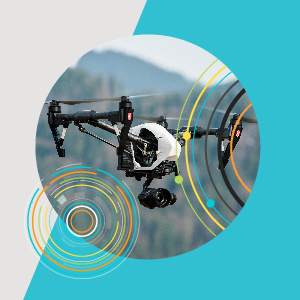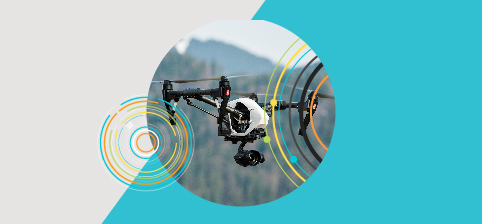In the coming years, the Department of Defense (DoD) will spend billions of dollars on unmanned aircraft systems (UAS), which will include the expansion of the fleet through the Blue UAS effort, training, and maintenance. Drones and autonomous vehicles perform a variety of tasks in the battlespace, including mine-sweeping, intelligence, surveillance and reconnaissance, and search and rescue operations. However, there are challenges to monitoring the security and performance of these mobile endpoints—and the complex 5G networks they depend on.
How, then, can federal IT pros reap the benefits of UAS and 5G while bolstering the DoD’s IT infrastructure to realize those advantages without consequence? The answer is to introduce a two-fold focus within this ever-evolving environment.
-
Build a Robust, Layered UAS Security Framework
From the manufacturing process through to deployment, drones are a lucrative target for nefarious actors seeking to disrupt operations, damage infrastructure, and cause bodily harm. Common tactics include injecting malicious code into UAS parts, using GPS spoofing to hijack a drone mid-flight, and hacking communications between the drone and controller and breaching sensitive data.
Mitigating these threats requires a layered approach. This starts with basic security hygiene, including strong passwords, data encryption, and the use of automatic push update software to ensure software stays current and vulnerabilities are addressed in a timely manner.
 But some hackers have the expertise to bypass this first line of defense. To combat this, military units must layer in more advanced measures. For example, snap-on deception technology can obscure the location of a drone and pilot. In addition, if a drone is lost or captured, cyber-hardening modules can protect against data exfiltration, erase log files, and shut the drone down.
But some hackers have the expertise to bypass this first line of defense. To combat this, military units must layer in more advanced measures. For example, snap-on deception technology can obscure the location of a drone and pilot. In addition, if a drone is lost or captured, cyber-hardening modules can protect against data exfiltration, erase log files, and shut the drone down.
Machine learning (ML) algorithms can also be leveraged to learn from drone flight patterns and behavior and flag anything deemed suspicious. Sophisticated ML and security information and event management (SIEM) tools can even continuously monitor drone-to-base communication for a complete understanding of the security status of UAS devices and network connections—in near real time.
-
Gain End-to-End Observability of Hybrid 5G Networks
UAS operating on next-generation 5G wireless technology benefit from various advantages, such as unlimited bandwidth for uninterrupted control and high-speed transmission of image and video. 5G also offers security benefits. These networks can be designed to route traffic through an IP tunnel encrypted by default. Plus, additional security features can be layered on top without slowing the network.
However, 5G also brings increased complexity and visibility challenges. 5G networks comprise cloud and virtualized environments incredibly difficult to configure, monitor, and manage at scale using disparate legacy tools. As a result, IT teams risk drowning in a sea of alerts and disjointed analytics and may lack actionable insights to quickly identify, prioritize, and resolve issues.
To solve the challenges of 5G’s hybrid reality, military organizations must shift from a reactive to proactive IT posture and go beyond conventional monitoring. The best way to get a handle on connected UAS is to use single-pane-of-glass monitoring coupled with actionable intelligence delivering greater visibility, dependency insights, and operational predictability into everything connected to the network. With this automated toolset, they can visualize the entire 5G hybrid environment, reduce alert fatigue, accelerate issue resolution, and eliminate tool sprawl.
Finally, because encryption is a key capability of 5G networks, it can erode observability and insights into malicious activity, such as malware originating from a suspicious IP or connected UAS. Network architects should consider advanced traffic analysis strategies capable of segmenting encrypted traffic, decrypting it, inspecting it, and re-encrypting it—continuously and in real time—without compromising classified data.
Turning Challenges Into Possibilities
The distributed nature of UAS and 5G technologies is a complex challenge for the DoD that increases the attack surface and demands end-to-end oversight.
Fortunately, as these technologies have advanced, so has observability, helping federal IT pros gain deep, holistic visibility into hybrid 5G network environments and edge UAS devices—with a low total cost of ownership.
SolarWinds Hybrid IT Observability solutions are built to fortify mission-critical services. Click here to learn more.







